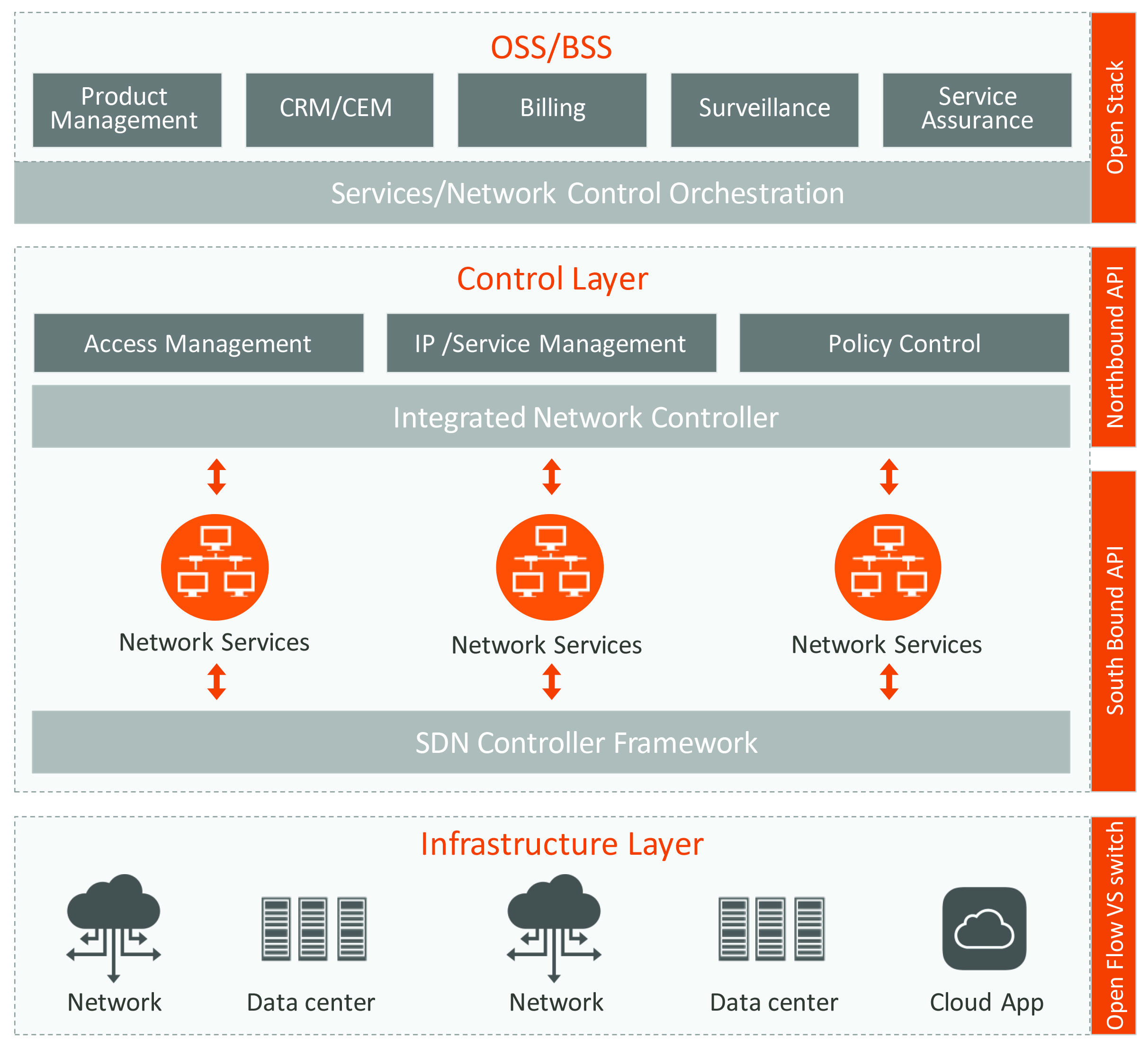According to data growth statistics, over the coming years we will experience a tremendous jump in data generation and consumption. Cisco forecasts that global cloud traffic is expected to grow 4.5 fold. That amounts to a 35% CAGR — from 1.2 zettabytes of annual traffic in 2012, to 5.3 zettabytes by 2017.
Overall, Ravi Palepu of Virtusa says: “Cisco expects global data center traffic will grow threefold and reach a total of 7.7 zettabytes annually by 2017. If those numbers seem impressive, consider that IDC estimates that the Internet of Everything will amount to a US$ 8.9 trillion market in 2020.”
To co-ordinate IDC’s estimated 212-billion things, data centers will need to shoulder the burden. This clearly puts the onus on networks to support the enormous amount of data that is being transmitted across channels. Within this context, Software Defined Networking (SDN) is likely to reshape the telecom industry in new and interesting ways – offering telco CTOs/CIOs benefits such as increased agility and flexibility, and cost savings (both Capex and Opex), as enterprises shift from a physical to cloud based infrastructure.
Reducing costs and improving network efficiency
With SDN, carriers can increase the flexibility and manageability of their networks; helping to deliver bandwidth where and when customers need it with a (more) self-serve model. Operators can potentially improve both their network flexibility while reducing the high operational costs of supporting Over-the-Top (OTT) providers (e.g. Google, Amazon and Skype); which otherwise could challenge carrier’s ability to grow their revenues and impact on their margins. Software-defined networking (SDN) would provide the bandwidth flexibility that carriers need to deliver a range of cloud-based services. In particular, SDN will help carriers to:
- Automate the provisioning and maintenance of network services, which are currently highly people-intensive. For example, estimates suggest that enterprises could see up to a 95% reduction in capital costs by implementing commodity silicon within switching infrastructure.
- Streamline multi-tier architectures into flatter, fabric-based infrastructure; reducing operational costs associated with real estate, power, cooling, cabling and a host of other factors.
- Automate traffic management, improve bandwidth engineering and enable Certified Safety Professionals (CSP) to tailor the network “on demand” to customer needs.
Building bolder business models with SDN and Network-function virtualization (NFV)
SDN with NFV offers a way for CSPs to break out of their established, inflexible business models. CSPs can develop flexible models that are based on tiered services and on elastic services (e.g. security-as-a-service, unified communications-as-a-service, etc.) They can also pay network equipment providers on a per-use basis for network functions as needed, as opposed to capital expenditure tied to under-utilised equipment.
The SDN driven environment will not only help incumbent providers become more agile and able to adapt to market trends and subscriber demands more effectively, but will open up the market to Tier 2 and Tier 3 players; who may not have had the deep pockets needed to develop proprietary hardware. It will allow new carriers to quickly scale and compete, as they won’t have to load up on costly central office equipment to get started. Tier 2 and Tier 3 CSPs will benefit from:
- Shorter time to market and lower costs for new services through running production and test and reference facilities on the same infrastructure, and not using commoditised hardware
- More choice and less risk as pure software competitors emerge, due to the fact they don’t need to invest in hardware anymore
- Near real-time resource allocation to ensure network resiliency and protection from failures
- Multi-tenancy support allowing carriers to securely share hardware resources
- Improved power management; servers can be switched off or go into low power mode during non-peak hours
- A competitive advantage against OTT services through easier integration of third-party services
The early bird gets the worm
SDN adoption is still in its infancy. While some carriers have realised early adoption can substantially benefit their organisation, others are taking cautious approach due to the CapEx required and the negative impact on the company’s competitiveness associated with the immature product. Yet as the technology matures, we see most operators turning to SDN to protect their future and benefit from lower cost of operations, new revenue streams and strengthened network services. Failure to plan for SDN now, could put CSPs at risk tomorrow.
The author is Ravi Palepu, head of Telco Solutions, Virtusa






